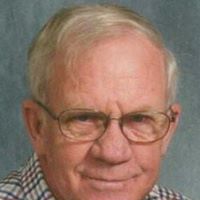Ronald Richard Rayburn
age ~66
from Baker, FL
- Also known as:
-
- Ronald R Rayburn
- Ron R Rayburn
- Ronald R Raybarn
- Phone and address:
- 5309 Hillcrest Rd, Crestview, FL 32539
Ronald Rayburn Phones & Addresses
- 5309 Hillcrest Rd, Crestview, FL 32539
- Baker, FL
- 4009 Sloane St, Norman, OK 73072
- 10201 Beaver St W #269, Jacksonville, FL 32220
- 2835 Rollingwood Dr, Tyler, TX 75701
- Huntington, IN
- Okaloosa Is, FL
- 1504 Dads Rd, Baker, FL 32531
Resumes

Ronald Rayburn
view sourceUs Patents
-
Method For Controlling A Heating Ventilating And Air Conditioning Unit
view source -
US Patent:6488081, Dec 3, 2002
-
Filed:Feb 6, 2001
-
Appl. No.:09/776882
-
Inventors:Ronald R. Rayburn - Norman OK
Neil A. Hughes - Norman OK -
Assignee:York International Corporation - York PA
-
International Classification:F25B 2900
-
US Classification:165250, 165248, 165208, 236 493, 454256, 454258
-
Abstract:A method for controlling a heating, ventilating, and air conditioning unit is provided. A conditioning unit having a heating stage, a cooling stage, a fan, and an economizer is operated to provide supply air to one or more zones. The temperature of air in the one or more zones and the temperature of air supplied to the one or more zones from the conditioning unit is sensed. At least one of the heating stage, the cooling stage, and the economizer is activated when the sensed temperature in at least one of the one or more zones is outside of a first predetermined temperature range. At least one of the heating stage, the cooling stage, and the economizer is activated when the sensed temperature of the air in the at least one of the one or more zones is within the first predetermined temperature range and the sensed temperature of the supply air is outside of a second predetermined temperature range.
-
Control For A Heating Ventilating And Air Conditioning Unit
view source -
US Patent:6491094, Dec 10, 2002
-
Filed:Feb 6, 2001
-
Appl. No.:09/776884
-
Inventors:Ronald R. Rayburn - Norman OK
Neil A. Hughes - Norman OK -
Assignee:York International Corporation - York PA
-
International Classification:F25B 2900
-
US Classification:165250, 165248, 165208, 236 493, 454256, 454258
-
Abstract:A control system for a heating, ventilating, and air conditioning unit having a heating stage, a cooling stage, and an economizer is provided. The system includes a memory configured to store a first predetermined temperature range and a second predetermined temperature range. The system also includes a control having an input device configured to receive an indoor air temperature representative of the air in one or more zones and a supply air temperature representative of the air entering the one or more zones. The control selectively activates at least one of the heating stage, the cooling stage, and the economizer when the indoor air temperature is outside of the first predetermined temperature range. The control also selectively activates at least one of the heating stage, the cooling stage, and the economizer when the indoor air temperature is within the first predetermined temperature range and the sensed temperature of the supply air is outside of the second predetermined temperature range.
-
Method For Controlling An Economizer
view source -
US Patent:6634422, Oct 21, 2003
-
Filed:Mar 19, 2001
-
Appl. No.:09/810555
-
Inventors:Ronald Richard Rayburn - Norman OK
Stephen Blake Pickle - Norman OK
Stephen Carl Wilson - Oklahoma City OK -
Assignee:York International Corporation - York PA
-
International Classification:F24F 11053
-
US Classification:165250, 165248, 165217, 454256, 236 493
-
Abstract:A method of controlling an economizer is provided. A heating, ventilating, and air conditioning unit is operated in one of a heating mode and a cooling mode to provide conditioned air to a plurality of zones. A first temperature representative of air returned to the unit from the plurality of zones is sensed and a second temperature representative of the outdoor air is sensed. An economizer is modulated to increase the amount of outdoor air entering the unit when the first temperature falls below a cooling setpoint, the second temperature is greater than the first temperature, and the unit is operating in the cooling mode. The economizer is also modulated to increase the amount of outdoor air entering the unit when the first temperature rises above a heating setpoint, the second temperature is lower than the first temperature, and the unit is operating in the heating mode.
-
System And Method For Using Hot Gas Re-Heat For Humidity Control
view source -
US Patent:7062930, Jun 20, 2006
-
Filed:Oct 27, 2003
-
Appl. No.:10/694331
-
Inventors:Ronald Richard Rayburn - Norman OK, US
-
Assignee:York International Corporation - York PA
-
International Classification:F25B 29/00
-
US Classification:62173, 621761, 62175, 621964
-
Abstract:A humidity control method is provided for a multi-stage cooling system having two or more refrigerant circuits. A hot gas re-heat circuit having a hot gas re-heat coil is connected to one of the refrigerant circuits and is placed in fluid communication with the output airflow from the evaporator of that refrigerant circuit to provide additional dehumidification to the air. Humidity control is only performed during cooling operations and ventilation operations. During a first stage cooling operation using only one refrigerant circuit and having a low cooling demand, the request for humidity control activates the hot gas re-heat circuit for dehumidification and activates a second refrigerant circuit to provide cooling capacity. During a second stage cooling operation using two or more refrigerant circuits and having a high cooling demand, the request for humidity control is suspended and is initiated only upon the completion of the second stage cooling demand.
-
Hvac Start-Up Control System And Method
view source -
US Patent:7099748, Aug 29, 2006
-
Filed:Jun 29, 2004
-
Appl. No.:10/879373
-
Inventors:Ronald Richard Rayburn - Norman OK, US
-
Assignee:York International Corp. - York PA
-
International Classification:G05D 23/00
-
US Classification:700276, 700278, 236 1 C, 165238
-
Abstract:A controller controls operation of a HVAC&R device, bringing the temperature inside a structure from a first temperature to a second temperature at a predetermined time each day. Sensors sense the temperature both inside and outside the structure. A recovery time is calculated based upon a previously calculated air treatment rate of temperature recovery for the HVAC&R device to drive the temperature of the structure through a temperature change, the recovery time calculation being obtained by multiplying the difference between the sensed temperature inside the structure and the second temperature by the previously calculated air treatment rate. A correction factor is calculated based upon a relationship between the sensed outside temperature and a previously sensed outside temperature, the correction factor being added to obtain a corrected recovery time. The HVAC&R device is initiated at a time defined by the predetermined time subtracted from the corrected recovery time.
-
Transport Of Encapsulated Serial Data Via Instant Messaging Communication
view source -
US Patent:7640066, Dec 29, 2009
-
Filed:Feb 5, 2004
-
Appl. No.:10/772620
-
Inventors:Ronald Richard Rayburn - Norman OK, US
Charles Lynn Crawford - Norman OK, US -
Assignee:York International Corporation - York PA
-
International Classification:G05B 15/02
G05B 23/02
G05B 19/18
G05B 11/01
G05B 15/00
G01B 3/00
G01B 5/00
G06F 11/00 -
US Classification:700 17, 700 9, 700 83, 340 31, 702 33, 702188
-
Abstract:A method and system is provided for gathering and packetizing data from networked building automation equipment, and for transmitting data packets as instant messages to remotely located users. An instant messaging (IM) server-based system is provided to facilitate communication between networked building equipment and a remotely located service contractor. When a registered router is operated, the router establishes a continuous pass-through communication link with the IM server and with building equipment connected to the router. The router automatically polls connected building equipment for alarms, faults and system failures, and also receives, processes, and responds to user requests for specific data from particular items of building equipment. Data gathered by the router is packetized, and the packets are then encapsulated into an instant message that is transmitted to the IM server. Authorized users who log on to the IM server are then provided access to the instant message containing the packetized data.
-
System And Method For Using Hot Gas Re-Heat For Humidity Control
view source -
US Patent:7726140, Jun 1, 2010
-
Filed:Aug 30, 2004
-
Appl. No.:10/929757
-
Inventors:Ronald Richard Rayburn - Norman OK, US
Stephen Blake Pickle - Norman OK, US
John Terry Knight - Moore OK, US
Stephen Wayne Bellah - Oklahoma City OK, US
Anthony W. Landers - Yukon OK, US -
Assignee:York International Corporation - York PA
-
International Classification:F25B 49/00
F25B 7/00 -
US Classification:62175, 621761
-
Abstract:A humidity control method is provided for a multi-stage cooling system having two or more refrigerant circuits. A hot gas re-heat circuit having a hot gas re-heat coil, an evaporator and a compressor, such as the evaporator and compressor utilized in one of the refrigerant circuits, is provided. The hot gas re-heat coil is placed in fluid communication with the output airflow from the evaporator of the re-heat circuit. Humidity control is performed during cooling operations and ventilation operations. During a first stage cooling operation using only one refrigerant circuit and having a low cooling demand, the request for humidity control activates the hot gas re-heat circuit for dehumidification and activates a second refrigerant circuit to provide cooling capacity. During a second stage cooling operation using multiple refrigerant circuits and having a high cooling demand, the request for humidity control is suspended until completion of the second stage cooling demand.
-
System And Method For Commissioning A Unit Into A Networked Control System
view source -
US Patent:20040111500, Jun 10, 2004
-
Filed:Dec 10, 2002
-
Appl. No.:10/315900
-
Inventors:Ronald Rayburn - Norman OK, US
-
Assignee:York International Corporation - York PA
-
International Classification:G06F015/177
-
US Classification:709/222000, 700/276000
-
Abstract:A system and method is provided for an HVAC or refrigeration unit to obtain an appropriate address in order to commission the unit into a networked controls system. The units are assigned a predetermined address at the factory. After the unit is installed and is wired into the control network, a single action can be taken by an operator to commission the unit into the network. In commissioning the unit into the network, a valid address has to be obtained for the unit. A valid address is obtained for the unit by sequentially checking addresses on the network until an available address is located. Once an available address is located, the available address is assigned to the unit and the control system is notified of the address to commission the unit into the network.
Flickr
Classmates

Ronald Rayburn
view sourceSchools:
Holton High School Holton IN 1953-1957
Community:
Jeri Riley, Gary Brown

Ronald Rayburn
view sourceSchools:
Central High School Carrollton GA 1986-1990
Community:
Tina Harper

Ronald Rayburn
view sourceSchools:
Battle Lake High School Battle Lake MN 2002-2006
Community:
Rodney Swenson

Ronald Rayburn (Goldberg)
view sourceSchools:
Maine North High School Des Plaines IL 1979-1983
Community:
Matt English, Cy Taggart

Ronald Rayburn
view sourceSchools:
Robinwood Elementary School Columbus OH 1975-1977, Rosemore Junior High School Whitehall OH 1977-1979

Ronald Rayburn | Plant Ci...
view source
Holton High School, Holto...
view sourceGraduates:
Ronald Rayburn (1953-1957),
Robert Perkins (1953-1957),
Arlene Miller (1959-1963),
Robert Hopkins (1956-1960)
Robert Perkins (1953-1957),
Arlene Miller (1959-1963),
Robert Hopkins (1956-1960)

Rosemore Junior High Scho...
view sourceGraduates:
Ronald Rayburn (1977-1979),
Shandra McCarty (1974-1975),
Debbie Marshall (1971-1973),
Natalie Storey (1986-1986),
Randy Carpenter (1987-1989)
Shandra McCarty (1974-1975),
Debbie Marshall (1971-1973),
Natalie Storey (1986-1986),
Randy Carpenter (1987-1989)

Ronald Rayburn
view source
Ronald Rayburn
view source
Ronald Douglas Rayburn
view sourceYoutube
Get Report for Ronald Richard Rayburn from Baker, FL, age ~66











